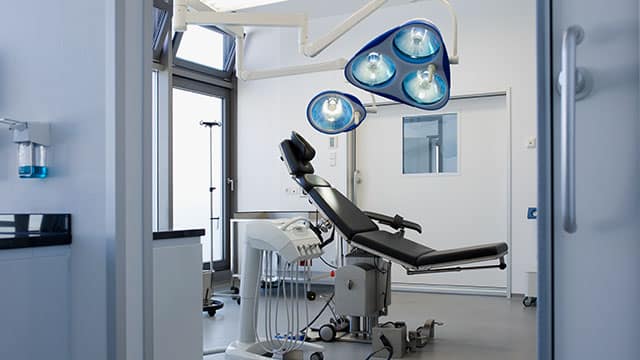-
-

FLUORIDE
What Is Stannous Fluoride Toothpaste?Discover what is Stannous Fluoride Toothpaste and its importance to prevent cavities and other oral health problems.

TEETH WHITENING
Whitening toothpaste - hydrogen peroxide vs. carbamide peroxideIf you lose one or more of your front teeth due to injury or decay, you may feel ...
-
Science & InnovationOral Health Commitment
- Oral Health Commitment
- Bright Smiles, Bright Futures
- Educational Resources
- Mobile Dental Van
- Volunteer
- ORAL HEALTH CHECK
- PRODUCT MATCH
- Oral Health and Dental Care | Colgate®
- Oral Health
- Deep Cleaning Your Teeth: When To Do It


Deep cleaning your teeth might sound like something a dental professional recommends if you’ve not been brushing your teeth well enough or if you’ve missed more than a few dental visits. But in fact, deep cleaning is a dental procedure that treats gum and periodontal disease. According to a study by the Journal of the American Dental Association, deep cleaning is especially beneficial to people with chronic periodontitis. Learn when deep cleaning is right for you and how the process works.
When Is Deep Cleaning Necessary?
The American Academy of Periodontology suggests that the bones and gum tissue surrounding your teeth should fit snugly around them. When you have periodontal disease, these very bones and gum tissue get destroyed, resulting in pockets forming around your teeth.
Over time, these pockets increasingly get deeper, making room for bacteria to live, which leads to even more bone and tissue loss. Eventually, if too much bone is lost, dental professionals might recommend that you need to get those teeth extracted.
At your evaluation, your dentist will measure the depth of these pockets. If the pockets are too deep, you won’t be able to treat your teeth with at-home oral care only. You will need a deep dental cleaning.
How Does Deep Cleaning Work?
Deep cleaning of the teeth comprises two parts – scaling and root planing.
Scaling. This part of the procedure is where a dental professional removes all the plaque and tartar (hardened plaque) collected below the gumline, cleaning all the way down to the bottom of the pocket.
Planing. The next step of deep cleaning consists of your dentist or dental hygienist smoothening out your teeth roots so the gums can reattach to your teeth.
It may take more than a single visit for your deep cleaning procedure to be complete.
Oral Care After Deep Cleaning
After your deep cleaning, the pockets should be free of bacteria, but your gum tissue will most likely feel sensitive. Your dentist will give you specific instructions on caring for your teeth in the weeks to follow. It’s best to be careful about what you eat and how you brush. Your dental professional might also prescribe a mouth rinse to reduce bacteria in your mouth.
Your dentist will likely ask for you to come back for a check-up in a couple of months.
Deep cleaning for your teeth might feel like a big step, but in reality, it’s an effective procedure that can remove infection and tartar so your gums can heal. By prepping yourself mentally for the procedure, you can take the first steps towards healthier and happier gums. After all, happier gums equal a happier you!
Oral Care Center articles are reviewed by an oral health medical professional. This information is for educational purposes only. This content is not intended to be a substitute for professional medical advice, diagnosis or treatment. Always seek the advice of your dentist, physician or other qualified healthcare provider.
Related Articles

Dental visits
10 Common Questions To Ask Your DentistAt each appointment, asking dental questions is an important part of your long-term healthcare. Here are 10 you should get the answers to.

Dental visits
Understanding Deep Sedation At The Dentist's OfficeWith some types of dental work, your dentist might recommend a type of anesthetic like deep sedation. Learn all about deep sedation and what it's used for.

Dental visits
How to Find an Affordable DentistThose without insurance believe an affordable dentist is out of reach, but these regular dental visits are a must. Here's how to find care in your budget.

Dental visits
10 Signs You Have the Best DentistIf you're wondering whether or not yours is top of the line, consider these 10 things all good dentists do for their clients.
Related Products

Esse enxaguante bucal multibenefício Colgate Total 12 Carvão Ativado apoia as defesas naturais da sua boca com o zinco. Ele também ajuda a manter os dentes mais brancos, além de combater germes e bactérias para uma limpeza total por até 12 horas.

Colgate Total Alcohol Free* Gum Health Mouthwash delivers 24-hour protection** against bacteria and also helps prevent gum problems

Colgate Total Fresh Mint Toothpaste fights bacteria, the root cause of many oral health issues such as gingivitis, tartar, sensitivity, weak enamel, bad breath, and cavities.

Formulated with Fluoride and with a great mint taste, Colgate Cavity Protection Toothpaste cleans thoroughly, strengthens teeth, and fights cavities.

Helping dental professionals
More professionals across the world trust Colgate. Find resources, products, and information to give your patients a healthier future




